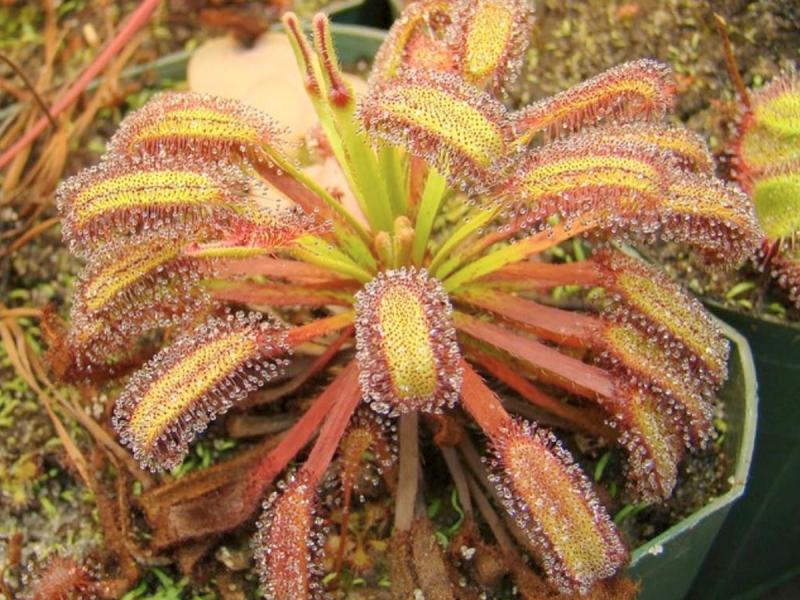They have three hearts, and their arms can be as long as 14 feet (Enteroctopus dofleini), or as small as 1 inch (Enteroctopus wolfi). But the eight-armed octopus has independently evolved mammal-like intelligence, with problem-solving skills that, along with their mobility and flexible bodies, let them escape from supposedly secure aquariums.
While Beatles member Ringo Starr sang of the “Octopus’s Garden” in the “Abbey Road” album, you can indeed have a real live octopus garden with the showy Octopus plant (Drosera capensis). It is called Octopus plant because of its rosette shape with long, trailing arms. Octopus plants are often referred to as Sundew, from the way the sunlight reflects off the drops of glue on their leaves. It is this sticky glue that traps insects to obtain nutrients for the plant. When an insect lands on a leaf of the Octopus plant, it sticks to the glue drops. The more it struggles, the more arms bend toward the insect and eventually kill it with the glue. In just 24 hours, the plant's digestive enzymes dissolve the insect and release the food to the rest of the plant. This added food lets Octopus plants thrive in very poor soil.
Even though they look exotic and tender, they are really easy to care for when grown indoors. The best potting soil for Octopus plants isn't soil at all, but an equal mix of sphagnum moss, peat moss and coarse sand. Never use potting soil, because it is too nutrient-rich and can kill the plants. In nature, these plants grow in wet, boggy areas, so they will die if you let the the soil dry out. Octopus plants grow well with just plain tap water, but rainwater or filtered (not softened) water will be salt-free and closer to the water found in the wild. To add humidity to the air, set the plant on a water-filled tray of pebbles. As the water in the tray evaporates, it releases moisture into the air. For even better humidity, try growing them in a terrarium or under a glass jar.
The plants do best in a bright, sunny spot with access to their preferred food, small insects. Open a window nearby once in awhile. Octopus plants come from South Africa and grow steadily throughout the year. You can even grow these carnivores under a desk lamp, or LED and low-wattage halogen lights. Test the heat by holding your hand between the lights and the plant. If your hand feels warm, move the lights slightly higher above the plant.
Buy either plants or seeds online or from a local nursery. You can sow seeds of Drosera capensis anytime. Sprinkle the fine seeds over the surface of the peat moss-sphagnum moss-sand mixture. Gently spray the soil with water, being careful to not wash away the seeds. Place a plastic bag over the pot to keep humidity in, and in a few weeks you will have seedlings ready to transplant into pots.
Whether you plant seeds or buy an already growing Octopus plant, you will have a real live flesh-eating sundew for your home. Ringo would be proud.



















































